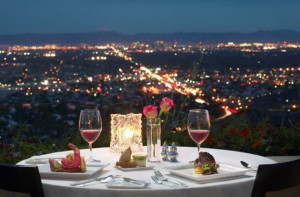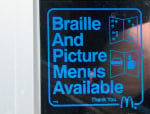I love food. Seriously—I’ll try most anything once, and checking out the hot, new place in town is one of my favorite ways to spend an evening.  In this world of Twitter, Facebook and Yelp, I get the chance to do this—perhaps more often than I should.
In this world of Twitter, Facebook and Yelp, I get the chance to do this—perhaps more often than I should.
As the server pours us water, he asks, “Can I start you off with some appetizers, or would you like some more time?” Here comes the moment of truth: “Do you have a braille menu?,” I ask, my fingers are crossed under the table... Um…No, I’m sorry, I don’t think we do, but let me double-check with the manager.”
I smile and thank him, but my date and I are pulling out our iPhones to try to Google the menu. Maybe we’ll get lucky and there’s a clean, screen-reader-friendly version available. Still, having our respective phones held up to our ears is not the fun, romantic date I was envisioning.
This time, we find an up-to-date menu on the website. I breathe a sigh of relief. This isn’t always the case, however. Sometimes, restaurants will post images of the menu, or their online menu is from last year. Of course, most servers are friendly and willing to read the menu aloud, but that’s not exactly efficient at

restaurants with huge selections, or on a busy Saturday evening, or when there’s live music—all of which are the signs of a
successful restaurant I definitely want to try.
Sitting at a restaurant and being offered a braille menu is exciting, and it doesn’t happen nearly enough.I dream of a day when I can go to any eating establishment and browse the menu at my leisure, debating the merits of each individual item. Looking at a menu is part of the whole experience—an enjoyable precursor to the deliciousness to come.
Learn about custom braille services from National Braille Press, including restaurant menus, business cards, manuals, and textbooks.
